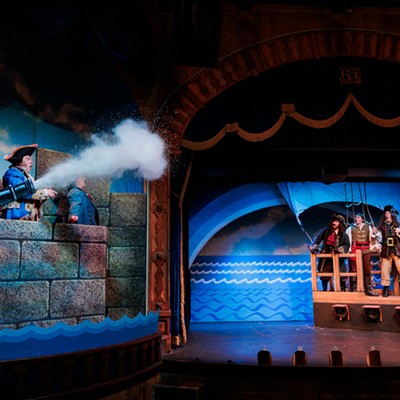The word "guerrilla" is enough to instantly scare off most Americans (or at least scare the sympathy out of them), who are perhaps too ready to imagine a group of "evil-doers" who terrorize the general populace while causing trouble for the legitimate and benign government. So, for context: During the anti-Communism paranoia that swept the United States after the end of World War II, the CIA funded and organized the overthrow of Guatemala's then-government, installing in its place a puppet government more acceptable to our own. The country's peasants suffered greatly during the ensuing push toward rapid industrialization, and soon rose up and demanded equal rights, thus sparking a 36-year civil war marked by gross human rights abuses on the part of the government, including the killings and mysterious disappearances of more than 200,000 Guatemalan people.
Harbury was a Harvard-educated lawyer and human-rights activist when she first visited Guatemala in 1990 while working on a book about the war. It was there that she met Efrain Bamaca Velasquez--a Mayan peasant-turned-leader of the resistance forces (U.R.N.G.)--also known as Commander Everado. She met him again in 1991, when Everado was in Mexico City to assist with preparations for peace negotiations on the issue of Mayan rights. They married later that year, and Everado returned to his people in the mountains in 1992.
On March 12 of that year, Harbury's husband vanished during a brief skirmish with Guatemalan military forces. The Guatemalan army reported that Everado had been wounded during combat, and had committed suicide in order to avoid being captured. For months, Harbury grieved for the loss of her husband. Then, in early 1993, she received new information from an escaped prisoner of war. ("Escaped" was as good as it got if you were a Guatemalan POW; at that time, the Guatemalan army had not released a prisoner of war alive in 35 years.)
Everado, the escapee told her, had been captured alive and was being subjected to severe, long-term torture inside a military base--long-term due Everado's high rank, which Guatemalan officials hoped would yield an unusual level of information. Military officials had reported him dead in order to avoid international human-rights protests.
Harbury immediately began her efforts to save Everado's life--she sought the help of the OAS, the United Nations, the international rights community, the U.S. Congress and the U.S. Department of State. During the summer of 1993, she traveled to Guatemala to open the grave in which the army had claimed her husband had been buried, post-suicide. Inside, she found a man too young and too small to be her husband. (It was later revealed that members of the military death squad had brutally murdered and made unrecognizable an 18-year-old Mayan peasant who had been forcibly conscripted into the Guatemalan army, specifically to use his body as a stand-in for Everado's.) She reported this, and all the other pieces of information she managed to gather, to the State Department, which continued to maintain it knew nothing of the whereabouts of her husband.
Harbury then began the first of three hunger strikes. The first one, staged in front of military headquarters in downtown Guatemala City, lasted a week. She began the second a year later, when her frustration and anguish reached their peak--every day, she thought, might be the one that cost her husband his life. She described this second hunger strike as "to the death," and it very nearly was. She developed a heart murmur after 30 days and could no longer open her left eye; she was less than a week away from the failure of vital organs when Mike Wallace of 60 Minutes reported that the U.S. Embassy in fact possessed a CIA report that clearly stated that Everado had been captured alive. Harbury abandoned her hunger strike to meet with high-level officials at the National Security Council, hoping to finally get the answers she needed.
Although there was now official confirmation that Everado had been captured alive, there was no evidence of his death. It was enough to keep Harbury fighting.
In 1996, having completely lost confidence in all U.S. agencies, she began filing Freedom of Information requests. Although expedited processing was granted, she received no documents or additional information, and resumed her hunger strike, this time in front of the White House. On the 12th day, Rep. Robert Torricelli--who had received information from Richard Niccio, a State Department official-turned-whistleblower--informed Harbury that her husband had been dead for some time, and that his illegal execution had been ordered by Col. Julio Roberto Alpirez, a former CIA "asset."
Harbury went on to document the astounding lies of the U.S. government, to collect the names and details that surrounded her husband's murder, and eventually undertook litigation that sought not only justice and responsibility in the matter of her husband's death, but sought to define when, and to what degree, the U.S. government is allowed to lie. She will deliver a lecture entitled Torture and U.S. Policy--From Latin America to Abu Ghraib at 7:30 p.m. Wednesday, Feb. 2 at First Christian Church, 740 E. Speedway Blvd. Call 623-6620 or 323-8697 for additional information.







